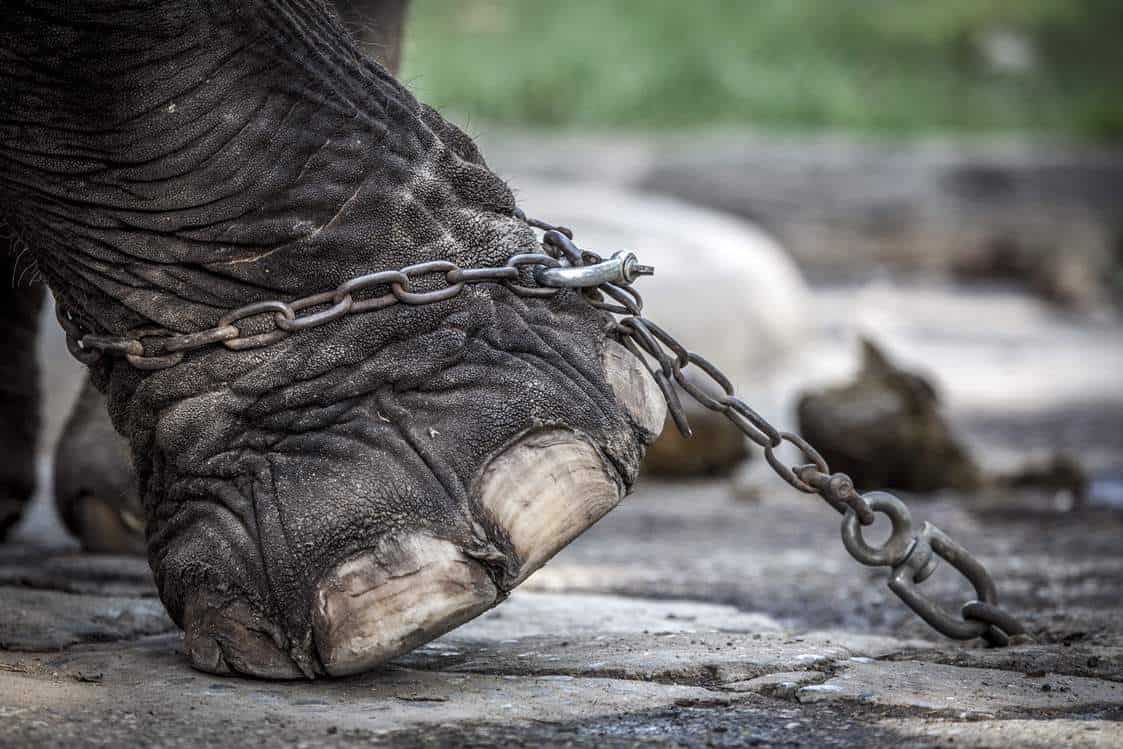
Wildlife Tourism: The Cruel Reality Behind Thailand’s Popular Animal Attractions And The Man Trying To Change It
In one of our recent articles, we listed a bunch of tips, tricks, and hacks for sustainable travel. Something we didn’t touch on in that article was the Wildlife Tourism Industry and how to avoid the horrific pitfalls.
To fill that gap, we spoke with Aaron ‘Bertie’ Gekoski, a photojournalist, presenter, and filmmaker who’s been working at the coalface of conservation and exposing human-animal conflict for over a decade.
Here is his story and the truth behind the Wildlife Tourism Industry.
Listen to the full Sustainable Jungle Podcast interview with Bertie here.
There are very few people in the world who dedicate their lives to a purpose greater than their own. Aaron ‘Bertie’ Gekoski is one of those people. But he wasn’t always like this.
Growing up in London, Bertie had a knack for remembering all the commercials on TV. He didn’t want to become a doctor or firefighter or even an astronaut. He dreamed of working in advertising. By his own admission, this was a bit left field and maybe also telling that he was not one for the conventional.
Fast forward a couple of decades and you would find Bertie heading up his own modeling agency in London, attending “nightclubs and smart model parties” and driving a sports car to match. He had achieved his childhood goal by the age of 28 years old. But there was something missing.
“I just grew sick of the industry and my lifestyle” – Aaron ‘Bertie’ Gekoski
Well aware of his interest in wildlife and documentaries and with enough fire under his chair (including some inspiration to throw maximum caution to the wind from the movie Into the Wild) he decided to pack it all in, give up the glitz and glamour and take the road less traveled.
His family and friends thought he had lost the plot. And some might say they had good reason for saying so.
Going into an industry he knew nothing about was, he says, “nerve-wracking and scary and something that took a lot of guts”
But risk-taking can pay off and for Bertie, it was “the best thing [he] ever did”.
“The happiest I ever felt was when I just got rid of everything, even my flat, all my possessions. I had 3 bags… 1 for my camera gear, 1 for my underwater camera gear and 1 was a bag of clothes. I lived for a while in a hut in Mozambique at the top of a sand dune and it had a hose shower and I would wake up in the morning and sit on my little balcony and watch the humpback whales playing together in the ocean and I had very little but I didn’t need much and it was the happiest I’ve ever been for sure.”
Aaron ‘Bertie’ Gekoski
INTO THE WILD
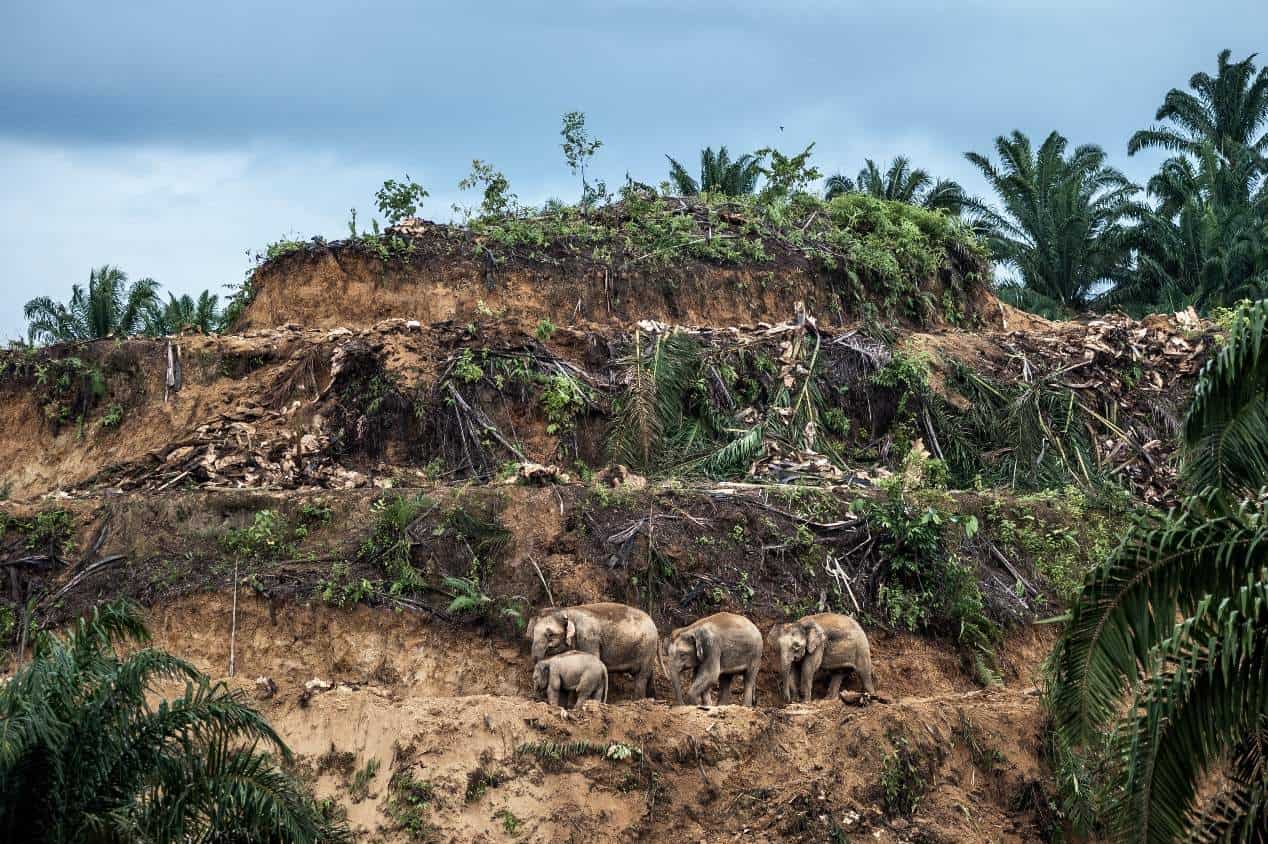
Taking the bull by the horns, he took a short course in wildlife filmmaking and then he made his way to Mozambique where he volunteered for 18 months on a shark finning documentary. It wasn’t long before he became the behind the scenes photographer.
But he didn’t just take the hard-hitting stills, he started writing about it and that’s when he fell in love with environmental journalism.
Since then Bertie hasn’t looked back.
He spent 7 years in Africa working in and exposing human-animal conflict. He describes his time on the continent as “wild” which may be a little understated considering some of the projects he’s worked on like:
- going undercover along with US Navy Seals to expose Namibia’s annual seal cull
- living with rural shark fishing communities in Mozambique
- getting chased through the forests of Madagascar by the ‘tortoise mafia’
- training as an anti-poaching ranger in Zimbabwe
Bertie’s articles and images have appeared in more than 40 international publications, winning multiple awards including the 2017 Wildlife Photographer of the Year, Photojournalist Category.
Today, Bertie moonlights as the in-house presenter for team ScuberZoo TV (a leading underwater production company that has worked on shows like Blue Planet II), on a number of short “funservation” shows covering the wildlife in and around Asia Pacific (Indonesia from Below, Borneo from Below and Timor Leste from Below).
To date, he’s fronted nearly 100 different episodes across different shows, including an online series for Smithsonian and Discovery’s Shark Week.
But for him, it’s not about collecting social followers or expanding his showreel.
“However I can work on these issues that I feel passionately about, whether as a photographer, as a journalist, as a presenter… for me it’s about the issues, if I can get them out there by making entertaining TV shows, then great, or if i can do it through my imagery then even better.”
It was truly inspiring hearing about Bertie’s life work and we would have loved to delve further into some of his most memorable animal encounters but it wasn’t the topic of conversation.
We were focused on his latest project: wildlife tourism.
WILDLIFE TOURISM: WHY IT’S A PROBLEM
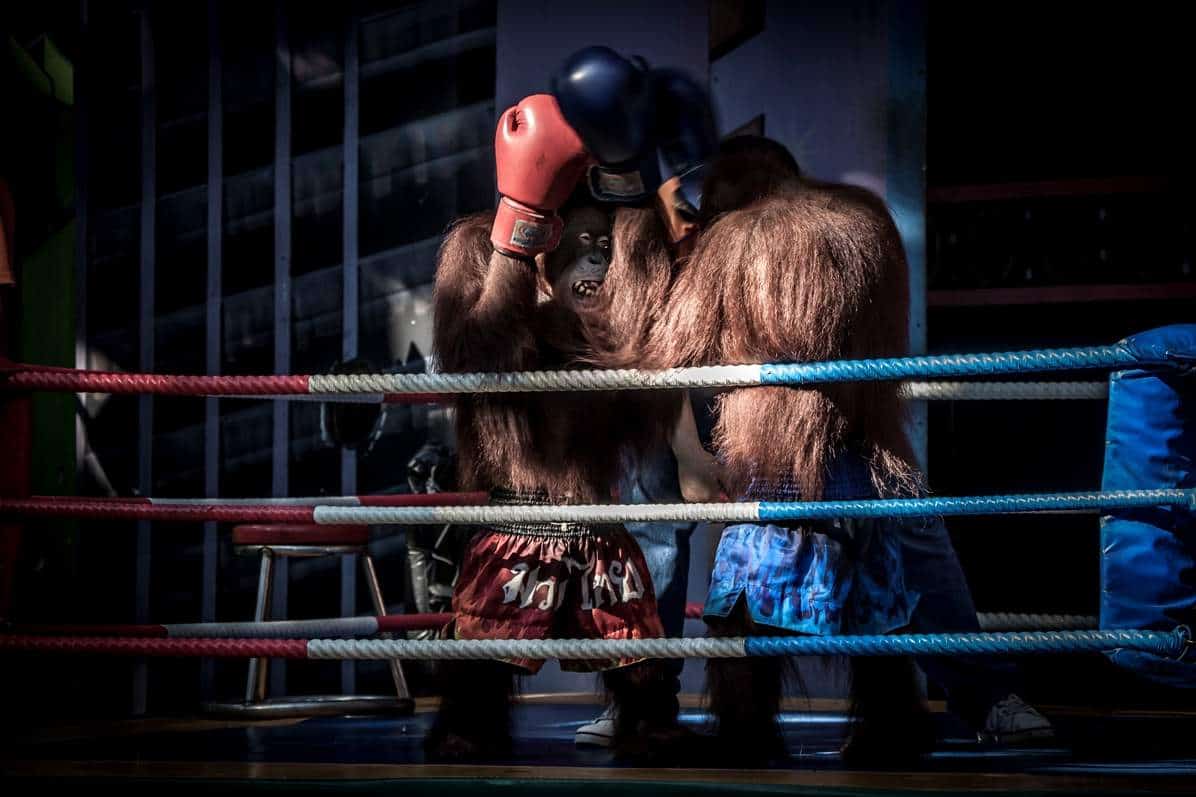
Wildlife tourism affects us all. Over 100 million people visit wildlife tourism attractions every year.
Sadly, the vast majority of us who make up those stats are completely unaware of the cruelty that takes place behind the scenes. There are estimated to be half a million animals that are beaten and abused and made to perform for entertainment.
With all the motivation and some private funding behind him, Bertie made for the epicenter of wildlife tourism, Thailand.
He visited some of the most infamous attractions in Bangkok and Phuket: orangutan boxing matches, tightrope walking elephants, bicycle riding monkeys, badly beaten crocodiles and tigers posing for pictures and selfies, to name just a few.
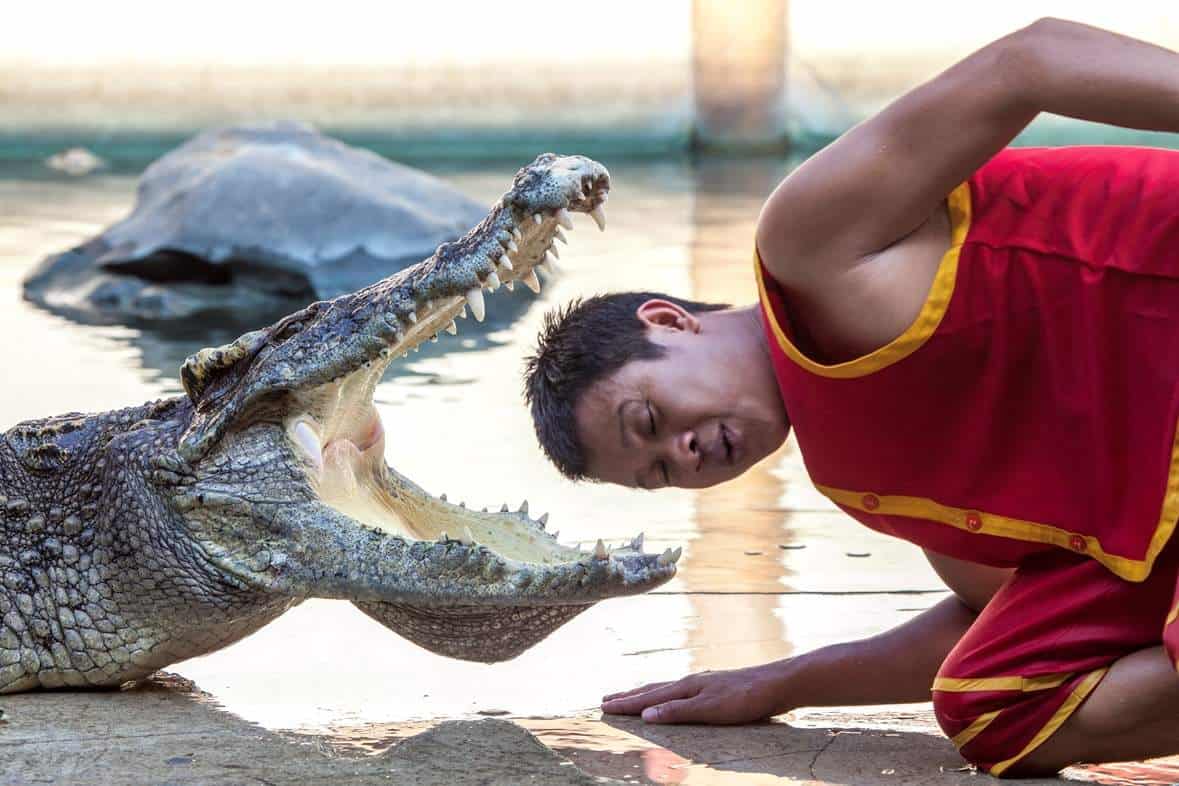
Many of the tourists whom he interviewed after the shows said that they thought the animals looked healthy and were enjoying it. A clear reflection of their lack of understanding of natural animal behavior.
At risk of stating the obvious, animals do not ordinarily behave the way they do when in a show. For example:
- An orangutan spends almost its entire life in the canopy, it would be rare to see one on the ground or living in a cage.
- Tigers would never placidly lie next to a foreign tiger let alone a human.
- Crocodiles keep their mouths open to moderate their body temperature, not because their handler’s head happens to be in between their jaws.
This curious animal behavior begs the question, why are they doing it? Why are they seemingly happy to comply?
The short answer is because they’re beaten.
They’re beaten and attacked until they’re too afraid to retaliate. There’s even a term for the ‘training’ of an elephant, it’s called “the crush” which is designed to break their spirits by continued physical abuse.
“Their eyes are dead, there’s just nothing there.”
Of course, the average tourist will never see this side of the wildlife tourism industry.
Nor will they see the living conditions of these animals which, according to Bertie, are heartbreaking.
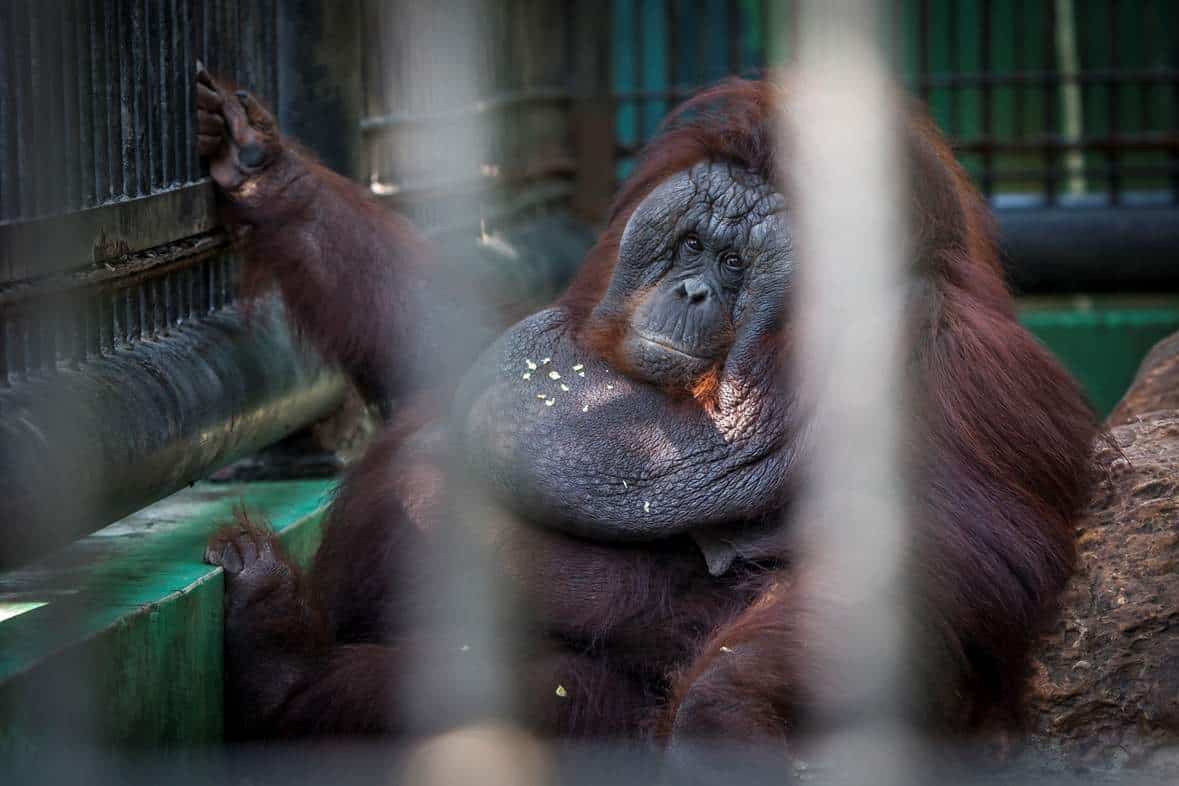
“Elephants so drugged up they could hardly stand. Tigers that were absolutely emaciated, stuck on these tiny chains so they couldn’t walk around, a gorilla at the top of a filthy shopping mall…orangutans kept in these disgusting cages or cells, an orangutan prison.”
Aaron ‘Bertie’ Gekoski
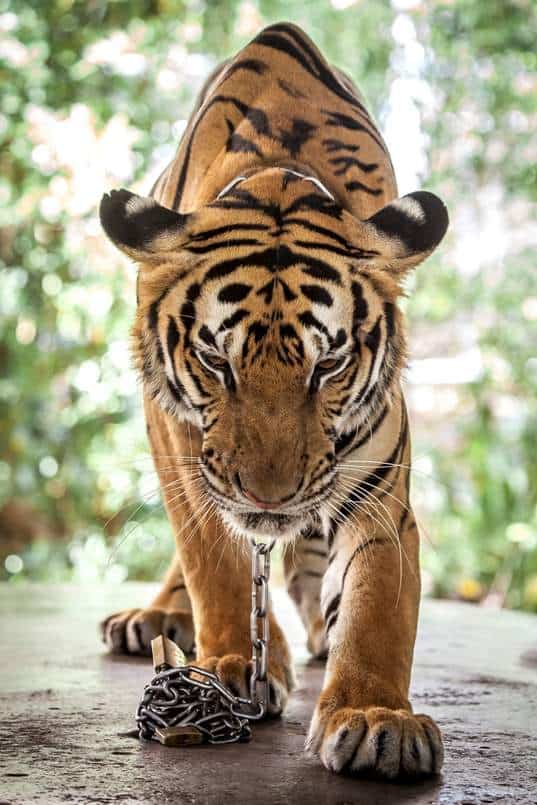
We asked Bertie how anyone could bring themselves to treat another living being like this.
He explained that while many western states are far from perfect, they typically have a different level of empathy for animals than those in the east who view them simply for consumption and enjoyment.
China’s traditional medicine industry is a case in point. It is wiping out endangered species at an incredible rate.
For example, the last male Northern White Rhino died on 19 March 2018.
His species was decimated by the demand for rhino horn, given its use as a traditional remedy to cure a variety of ailments from headaches, hallucinations, high blood pressure, typhoid, snakebite, food poisoning and low libido.
Unfortunately, the solutions to these situations are still far off. Hundreds of years of culture, superstition, belief systems, and behaviors means there are no short-term solutions for this problem.
However, Bertie notes, there are signs that the younger generation is changing. Following a spate of negative press around the culling of sharks, the consumption of shark fin soup is in decline across China.
The media, he explains, is the biggest weapon we have in the fight against the wildlife tourism industry. If there’s enough negative publicity, demand will drop and the authorities will be forced to act.
BERTIE’S PLAN TO RAISE AWARENESS
While tourists can take to social media to ring the alarm bells, Bertie says most platforms aren’t doing enough to educate users or raise awareness:
“[On tripadvisor] up to 80% of people leave positive reviews for attractions that are treating animals cruelly”.
And while Instagram has taken a stand against it (for example posting a picture with the #tigerselfie will come up with a warning), he says there needs to be more information out there, more needs to be done.
To tackle these issues, Bertie is in the process of designing Red Flag Animal Entertainment, an open platform (similar to TripAdvisor) where anyone can post photos, videos or a description of the wildlife tourism attraction with the objective of flagging abusive operators.
In addition, he’s launched a crowdfunding campaign which will enable him and his team to complete their full feature-length documentary on the wildlife tourism industry which will be distributed as widely as possible.
Find the crowdfunding campaign here
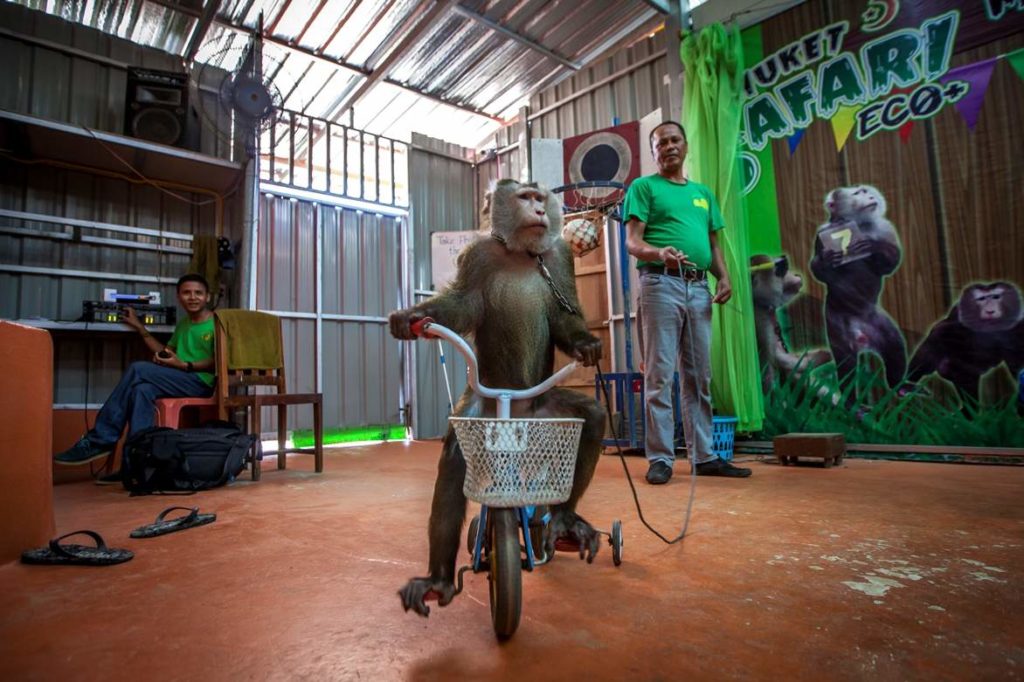
In the interim, his advice for anyone planning on a wildlife tourism getaway?
Research, read reviews and do your homework. There are, he says, responsible organizations out there who are doing real conservation work and those are the ones you want to support.
Wildlife tourism can be a very positive experience and there is a space for ethically managed facilities that look after captive, rehabilitated and endangered animals. Not only do they serve an important role in animal conservation but they can reach and educate a much broader audience than the few truly wild places that are left ever could.
However, if you do see something that you’re alarmed by post it on Facebook and leave a negative review on TripAdvisor, and if something is truly abusive contact the authorities. There are laws against animal cruelty (which unsurprisingly is not a defined term).
While it is unlikely that anything will be done, at least you’re raising the flag.
STAYING IN TOUCH AND SUPPORTING BERTIE’S WORK
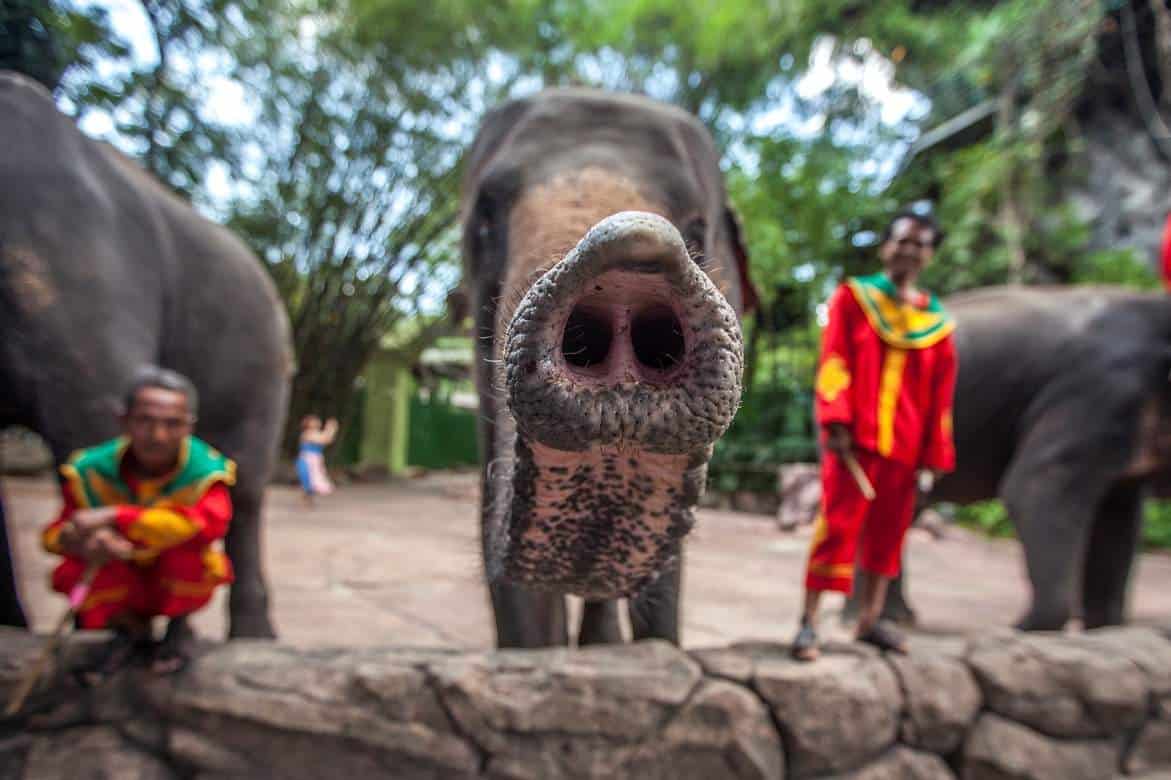
Bertie is working hard at making a huge difference to the animals in this heartbreaking story.
Please help him get the message out there and support his work. Links that will help you do just that:
Bertie’s crowd funding campaign for a Wildlife Tourism documentary:
Go Fund Me Crowdfunding Campaign
Aaron ‘Bertie’ Gekoski:
Bertie’s shows on Scubazoo (SZ) TV:
ScubaZoo TV:
Tourist attractions Bertie visited that are best to avoid:
- Samutprakan Crocodile Farm and Zoo in Bangkok
- Safari World in Bangkok
- Phuket Safari Eco+
- Phuket Zoo
Organisations to support:
- Freeland: Organisation working on stopping Wildlife Trafficking
- Wildlife Friends Foundation: Rescues and rehabilitates maltreated animals
- Elephant Nature Park: Founded by Sangduen “Lek” Chailert and a genuine sanctuary for elephants treating animals with respect and rescuing them from cruelty
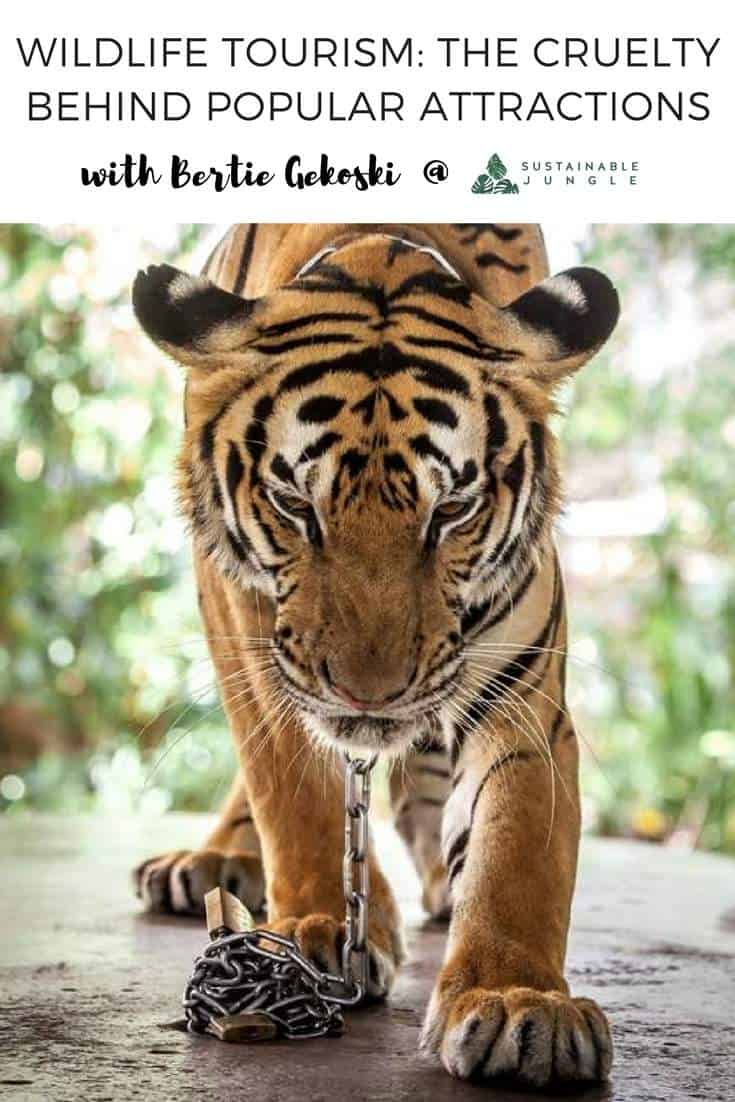




This seems to be getting more and more awareness all the time, and while it’s heartbreaking to read all these stories (orangutan boxing? WHAT?!) it’s always inspiring to hear about people like Bertie trying to change it all for good. Thans for sharing, and here’s hoping we see an end to all of this soon!
Had no idea that Orangutang boxing matches even existed. Thank you for writing this article. Awareness and education is the key to changing the behaviour of people. And yes, some people really believe that animals enjoy performing. Once I was explaining to my friend why one should never do elephant riding, and she was really surprised, she thought this makes them happy. So yes, Aaron ‘Bertie’ Gekoski does a very important job.
Thanks for the comment Yana, totally agree!